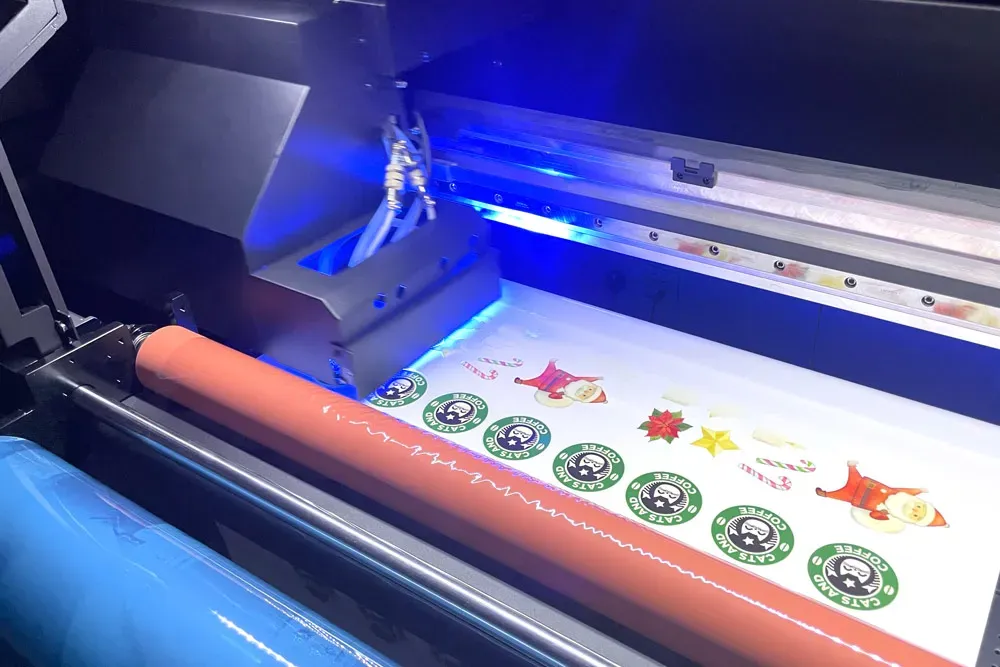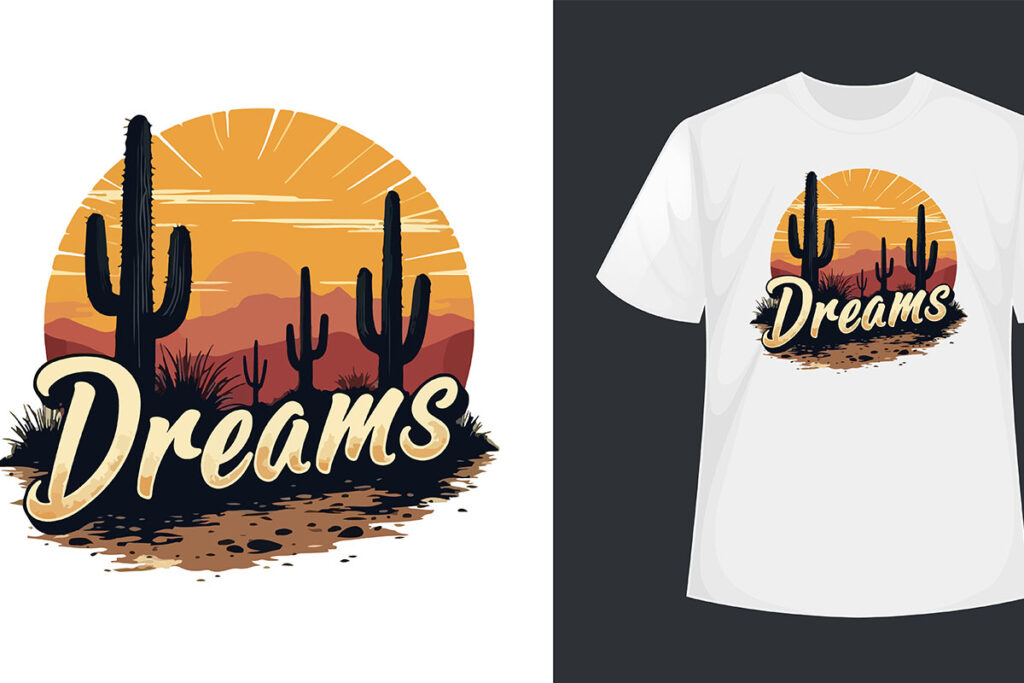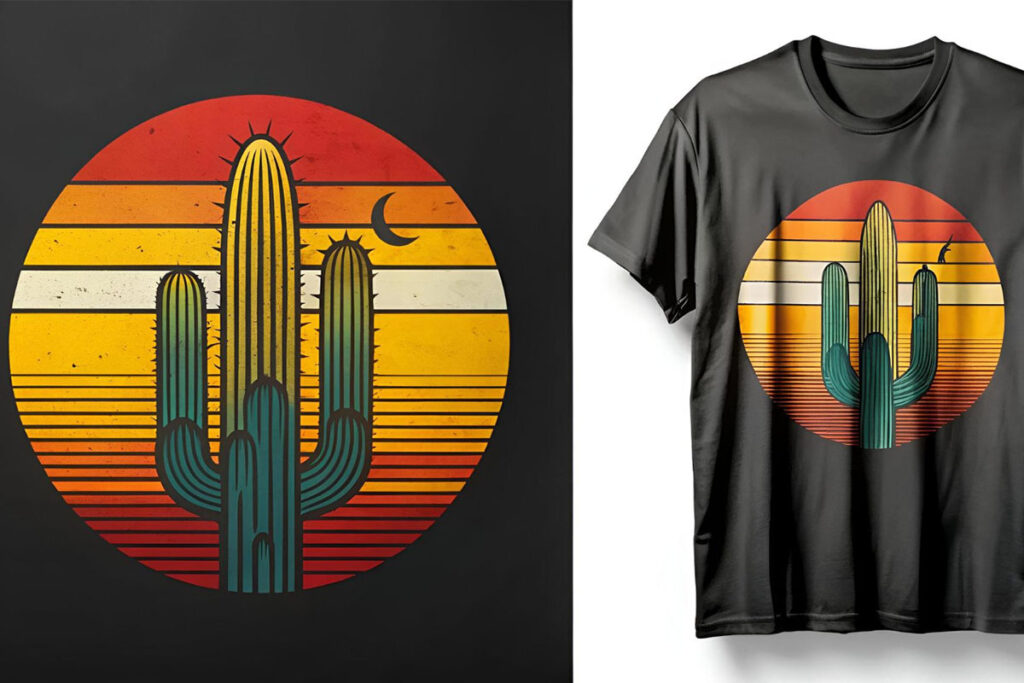In the realm of modern printing, UV DTF printing has emerged as a pioneering technique that blends innovation and creativity, offering superior quality and versatility. This cutting-edge method, which stands for UV Direct-to-Film printing, provides a seamless way to produce vibrant, durable prints on a variety of substrates. As we delve into this guide, we’ll uncover the specific advantages of UV DTF, exploring its application in industries ranging from fashion to promotional products. Interested in understanding how to use UV DTF effectively? You’re in the right place, as we will detail not only the technology itself but also the latest trends shaping its growth in the market.
UV DTF printing, or ultraviolet direct-to-film printing, represents a significant leap forward in digital printing technology, enabling exceptional customization for a wide range of items. This innovative approach allows for high-quality visuals that adhere remarkably well to various materials, such as textiles, plastics, and metals. With its ease of use and the remarkable longevity of prints, many are turning to this technology for their personalized printing needs. The advantages of ultraviolet DTF extend beyond aesthetics, as it includes considerations for environmental sustainability and operational efficiency. Whether you’re curious about its benefits or applications, understanding this revolutionary technology is crucial for anyone venturing into the future of printing.
Understanding the Essentials of UV DTF Printing
UV DTF printing, or ultraviolet direct-to-film printing, represents a significant breakthrough in the digital printing space. This technology utilizes UV light to solidify the inks directly onto a specialized transfer film, which is then used to transfer the print onto various substrates. The process begins with a digital design that is printed onto the film. Once the ink is laid down, it is cured immediately using UV lamps, which ensures that the colors are vibrant and the prints are durable. This method not only speeds up the production cycle but also enhances the quality of the final product, making it suitable for commercial applications.
One of the key aspects of UV DTF technology is its ability to print on an assortment of materials — from fabrics and plastics to glass and wood. This versatility allows businesses to expand their product offerings and cater to diverse customer needs. As brands increasingly seek unique personalized items, UV DTF has emerged as a go-to solution for custom apparel and novelty products, positioning itself as a valuable tool in the modern printing landscape.
Exploring the Advantages of UV DTF Printing
The advantages of UV DTF printing are numerous, setting it apart from traditional printing techniques. For instance, the absence of a need for pre-treatment of substrates dramatically decreases the preparation time, allowing for quicker turnaround on orders. Businesses benefit from this efficiency, as they can process a higher volume of orders in less time without sacrificing quality. Additionally, the prints produced are not only colorful but also exceptionally resistant to fading and scratch damage, ensuring longevity for products.
Furthermore, UV DTF printing is recognized for its eco-friendly attributes, utilizing fewer harmful chemicals and conserving water compared to traditional printing methods. This aspect appeals to environmentally-conscious consumers and businesses alike, as it promotes sustainable practices within the industry. By adopting UV DTF technology, companies can bolster their brand image while meeting the growing demand for sustainable product solutions.
Applications of UV DTF Printing Across Industries
UV DTF printing finds applications in a wide array of industries due to its adaptability and vibrant output. In the fashion sector, for example, it is transforming how apparel is customized. Custom-designed shirts, hats, and bags can showcase intricate graphics and colorful patterns impossible to achieve with traditional methods. The readiness of this printing technology allows artists and designers to bring creative visions to life with remarkable precision.
Besides fashion, UV DTF is extensively used in branding and promotional products. Items such as mugs, keychains, and promotional giveaways can be branded using UV DTF prints, helping businesses stand out in crowded marketplaces. The crisp detail and bright colors enhance the aesthetic appeal of promotional materials, ensuring that they leave a lasting impression on potential customers. This technology also benefits sign-making, with businesses able to produce clear, high-resolution signage that is both striking and durable.
Technological Advancements in UV DTF Printing
Technological advancements within UV DTF printing continue to evolve, bringing forth improved print resolutions and faster curing times. The introduction of advanced LED UV lamps has increased the efficiency of the curing process, allowing for shorter print cycles without compromising quality. These state-of-the-art printers can handle larger volumes with quicker setup times, which is particularly advantageous for businesses requiring rapid production.
Moreover, innovations in machinery have introduced features like automatic film feeding and precise alignment, further simplifying the printing process. As these enhancements emerge, companies can expect not only reduced operational costs but also an improvement in overall output quality and consistency. Keeping pace with these technological developments is essential for businesses looking to stay competitive in the dynamic landscape of printing.
A Guide on How to Use UV DTF Printing
Using UV DTF printing starts with selecting the appropriate printer and materials for your project. The printer should be compatible with UV inks and designed specifically for DTF applications. After preparing your design digitally, the next step involves printing onto a special PET film designed to receive UV ink. This requires careful calibration of the printer settings to ensure optimal ink distribution and accuracy in color reproduction.
Once the design is printed, the film is cured under UV light to solidify the inks. This curing process is crucial as it provides durability to the design before transferring it onto the intended substrate. Finally, the cured film is applied to the substrate with heat and pressure, ensuring adequate adhesion. Following these steps meticulously ensures high-quality and long-lasting prints, suitable for diverse applications ranging from customized apparel to promotional goods.
Current Market Trends and Insights in UV DTF Printing
The UV DTF printing market is on a significant growth trajectory, fueled by increasing consumer preferences for customization and unique product offerings. Trends indicate that many brands are leaning towards short-run and on-demand printing capabilities, positioning UV DTF printing as a reliable solution that combines flexibility with high quality. As manufacturers expand their capabilities, the demand for UV DTF printed products is expected to rise across various sectors.
Moreover, the rise of e-commerce and online customization platforms has accelerated the need for efficient printing technologies. Businesses are now focusing on quick turnaround times and personalized products, which aligns perfectly with the strengths of UV DTF technology. Staying abreast of these market trends not only prepares companies to meet customer demands but also enhances their competitive edge in the digital printing landscape.
Frequently Asked Questions
What is UV DTF printing?
UV DTF printing, or UV Direct-to-Film printing, is an advanced technique that uses ultraviolet light to cure inks as they are applied to a special film. This method ensures that prints are vibrant, durable, and resistant to fading, making it ideal for various substrates including textiles and plastics.
What are the advantages of UV DTF printing?
The advantages of UV DTF printing include its versatility in printing on multiple materials without the need for pre-treatment, leading to faster setup times. Additionally, this eco-friendly process uses less water and fewer harmful chemicals compared to traditional printing methods, making it a sustainable choice for businesses.
What are the common applications of UV DTF printing?
UV DTF printing is commonly used for creating custom apparel, promotional items, high-resolution signage, and personalized gifts. Its ability to print on diverse substrates enhances the aesthetic appeal of products, making it suitable for various industries.
How do I use UV DTF printing technology for my business?
To use UV DTF printing technology, start by selecting a compatible UV DTF printer and purchasing special films for printing. Prepare your designs, print them onto the film using the UV DTF printer, cure the ink with UV lamps, and finally transfer the prints onto your chosen substrate.
What is the setup process for UV DTF printing?
The setup process for UV DTF printing involves designing your artwork, printing it onto a special film using a UV DTF printer, curing the printed film with UV lamps, and then transferring the cured print onto your desired substrate using heat and pressure for adhesion.
What are the latest trends in UV DTF printing technology?
Recent trends in UV DTF printing technology include advancements in print resolution and curing speeds, with modern printers now featuring enhanced LED UV lamps. Such upgrades facilitate quicker production times, cater to the demand for on-demand printing, and improve overall printing efficiency.
| Key Points | Details |
|---|---|
| What is UV DTF? | UV DTF utilizes UV light to cure inks on film, creating durable prints resistant to fading and wear. |
| Advantages of UV DTF | – Versatility across various materials. – No pre-treatment required, increasing productivity. – Eco-friendly with reduced water and chemical usage. |
| Applications of UV DTF | – Apparel (custom clothing) – Promotional items (branded merchandise) – Signage (business signs and banners) – Personalized gifts (unique customized products) |
| Technology Developments | Advanced printers with enhanced LED UV lamps improve print quality and speed, catering to quick manufacturing demands. |
| Setup and Print Process | 1. Print design onto special film with UV DTF printer. 2. Cure the printed film with UV lamps. 3. Transfer print onto substrate using heat and pressure. |
| Market Trends | Increasing demand for customization drives the growth of UV DTF printing, catering to on-demand solutions. |
Summary
UV DTF printing is revolutionizing the digital printing landscape, offering a highly versatile and efficient solution for businesses looking to innovate. With its ability to produce durable, high-quality prints on various substrates without the need for pre-treatment, UV DTF printing is well-suited for a broad range of applications, from custom apparel to unique promotional items. As technology continues to advance, the process becomes even more streamlined, allowing for quick turnarounds and customization in response to market demands. By adopting UV DTF printing, businesses can capitalize on the growing consumer preference for personalized and distinct products, making it an invaluable addition to any printing operation.



